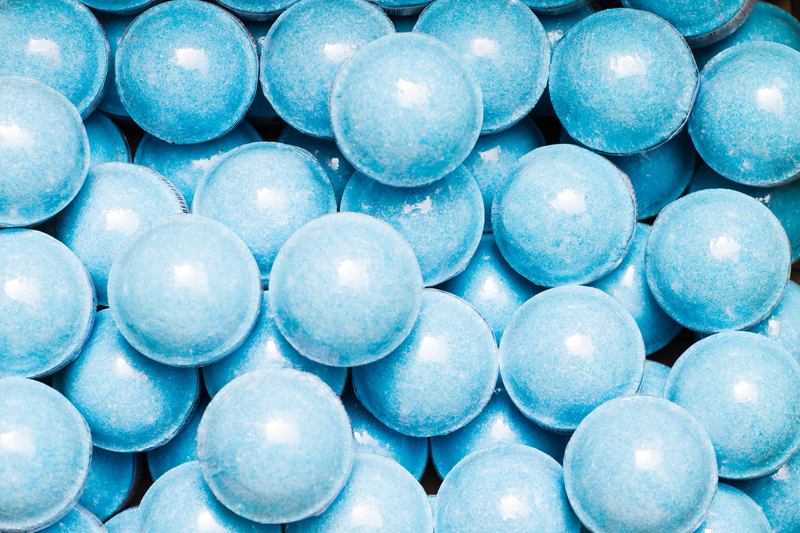Secrets to Cleaning Your Car with Professional Precision
Posted on 30/08/2025
Secrets to Cleaning Your Car with Professional Precision
Keeping your car looking immaculate isn't just about pride or aesthetics; it's also about protecting your investment and maintaining value for years to come. Professional car detailing often seems shrouded in mystery -- how do they get those perfect, gleaming results every time? In this comprehensive guide, you'll discover the secrets to cleaning your car with professional precision, from the right methods and materials to insider pro tips that make all the difference. Whether you're a DIY enthusiast or a first-time car owner, this expert-backed article will elevate your car cleaning game. Let's get started!

Why Clean Your Car Like a Pro?
Before we dive into techniques, it's important to understand why meticulous car cleaning matters. Here are a few compelling reasons:
- Preserves paintwork and finish
- Prevents rust and corrosion
- Maintains resale value
- Enhances your driving experience
- Improves overall hygiene and interior air quality
Professional-grade car cleaning doesn't just make your vehicle look stunning -- it safeguards your vehicle against the elements, inside and out.
Essential Tools and Products for Professional Car Cleaning
Pro detailers rely on specific equipment and chemicals. Here's what you'll need for cleaning your car with precision:
- Two clean buckets (one for soapy water, one for rinsing)
- Microfiber wash mitts and towels
- pH-balanced car shampoo
- Wheel and tire brushes
- All-purpose interior cleaner
- Glass cleaner (ammonia-free!)
- Foam applicator pads and detailing brushes
- Vacuum with soft brush attachment
- Plastic and leather conditioners
- Ceramic spray or carnauba wax
Tip: Invest in high-quality products and always use separate microfiber towels for paint, glass and wheels to prevent contamination and scratches.
Professional Car Exterior Cleaning: Step-by-Step
1. Pre-Rinse and Foaming
The first rule of professional car detailing is to avoid rubbing debris on your paintwork. Start by giving your car a thorough rinse with a hose or pressure washer to dislodge loose dirt. For an extra touch, use a foam cannon or pre-wash foam to break down grime before making contact with your wash mitt.
2. The Two-Bucket Method Explained
The two-bucket method is a time-tested pro technique that drastically reduces swirls and scratches:
- Fill one bucket with clean, soapy water and the other with plain water for rinsing.
- Dunk your mitt in the soap, wash a small section, then rinse the mitt in the clean water before reloading it with more soap.
- This ensures you're not grinding dirt into the paint as you work.
3. Washing Top to Bottom
Always wash your car from the top down, as the lower portions accumulate the most grime and road tar. Start with the roof and windows, then work your way down to doors and panels, finishing with the bumpers, wheels, and tires last.
4. Wheel and Tire Perfection
Professional detailers clean wheels and tires separately using dedicated brushes. Pay special attention to wheel wells and use a specific wheel cleaner for your wheel type to avoid damage. Never use the same wash mitt or towel for wheels and paint -- it prevents cross-contamination of abrasive brake dust.
5. Rinse and Dry Like a Professional
After the car is sparkling, rinse thoroughly from top to bottom. For drying, use a clean, plush microfiber towel and blot (rather than rub) to avoid micro-scratches. Consider using a car dryer or leaf blower to blow water out of crevices, door mirrors, and badges for a spotless finish.
The Professional's Approach to Car Interior Detailing
1. Full Interior Vacuuming
Pros start with a thorough vacuum. Remove all interior mats and use a variety of nozzles to get into every crack, seam, and under the seats. Don't forget the trunk!
2. Deep Cleaning Upholstery and Carpets
Use a foaming fabric cleaner for cloth seats and carpets. For stubborn stains, gently scrub with a soft brush and blot with a microfiber towel. For leather interiors, use a dedicated leather cleaner and conditioner -- never harsh household chemicals.
3. Cleaning and Conditioning Surfaces
Use an all-purpose cleaner on the dashboard, console, and door panels, applying with a soft brush for tight spaces and seams. Finish with a UV-protectant or conditioner appropriate for the material to restore luster and prevent cracking.
4. Streak-Free Glass Care
Spray glass cleaner onto a clean microfiber towel, not directly on the glass, to avoid overspray. Polish both inside and outside, paying extra attention to corners and edges.
Advanced Techniques: Taking Precision Car Cleaning to the Next Level
1. Clay Bar Treatment for Paint
After washing, run your hand over the paint -- if it feels gritty, it needs claying. Use a clay bar kit with lubricant to gently lift embedded contaminants. This step is the secret to that ultra-smooth, glass-like finish you see on showroom cars.
2. Polish and Protect
- Use a dual-action polisher with a finishing polish to remove minor swirls and add depth to your paint's gloss.
- Apply a ceramic spray coating or carnauba wax for long-lasting, hydrophobic protection and a candy-like shine.
Pro tip: Don't wax or polish in direct sunlight. Always work in the shade for best results.
3. Detailing the Little Things
- Use soft detailing brushes for air vents, buttons, and badges.
- Clean door jambs and under the hood edges -- areas even perfectionists sometimes overlook.
Secret Pro Tips for Flawless Car Detailing Results
- Use a grit guard in your rinse bucket to trap dirt and prevent reintroduction onto your mitt.
- Work in small sections to ensure thoroughness and consistency.
- Change microfiber towels frequently to avoid dragging dirt.
- Use compressed air or a small brush for tight interior spaces like window controls, vents, and seams.
- Apply tire dressing last to avoid accidental splatter onto freshly cleaned panels.
- Avoid washing in the heat of the day to prevent water spots and soap stains.
- Keep products off sensitive electronics such as navigation screens and instrument clusters; clean these with a damp, soft cloth only.
Common Mistakes to Avoid for Precision Car Cleaning
Getting professional results means not only using the right methods, but also steering clear of these common pitfalls:
- Don't use household detergents: Dish soap or glass cleaner can remove waxes or damage sensitive materials.
- Don't use abrasive sponges or brushes on paintwork: Only use wash mitts and plush microfiber towels.
- Avoid circular motions while washing: Wash and dry in straight lines to minimize swirl marks.
- Don't forget the undercarriage: Especially important if you live in a region with salted winter roads.
How Often Should You Clean Your Car Like a Professional?
Consistency is key to keeping your car in pristine condition. For most vehicles, a thorough cleaning every 1-2 weeks is ideal. Deep detailing, including clay bar, polish, and protection, can be done every few months or before special occasions.
Eco-Friendly and Smart Car Cleaning Tips
- Use biodegradable car shampoos to protect the environment.
- Wash on grassy areas to prevent soap and contaminants running directly into storm drains.
- Consider waterless wash products if water restrictions are in effect (just make sure your car isn't heavily soiled).

FAQs: Expert Answers to Top Car Cleaning Questions
What's the difference between washing and detailing?
Washing removes surface dirt and debris; detailing is a comprehensive process that cleans, restores, and protects every surface inside and out, often using advanced techniques such as claying, polishing, and protective coatings.
How do I prevent streaks on windows and paint?
Buff with a dry, clean microfiber towel until all residues are removed, and never allow water or cleaning products to air-dry on hot surfaces.
Can I use the same cleaning products for the interior and exterior?
It's best to use specific products for each area as different materials (paint, leather, vinyl, glass) require unique, gentle formulations for best results and longevity.
Conclusion: Achieve Professional Car Cleaning at Home
As you have discovered, the secrets to cleaning your car with professional precision aren't complicated, but they do require the right products, careful techniques, and a detail-oriented approach. By following the steps and tips outlined above, you'll see dramatic improvements not just in your car's appearance but also its long-term durability.
Spend the extra time and attention on your car, and you'll be rewarded with that gleaming, just-detailed look every time you hit the road. Happy Detailing!




